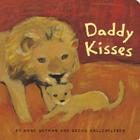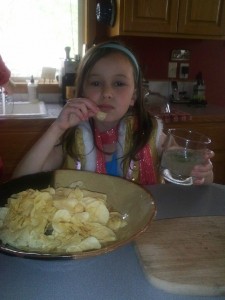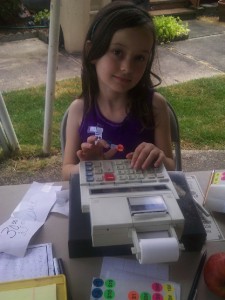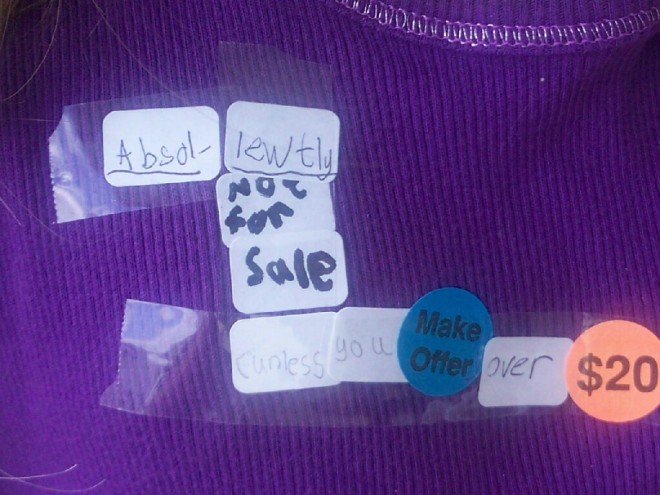What We’re Reading Now – August
What Anne’s reading
First Things First
The essence of this book is scheduling your priorities (instead of prioritizing your schedule). I’ve been so frustrated with my tendency to not do what I think I want to do. How on earth does not doing things I like make any sense? What would be the advantage of that, even as a defense mechanism learned as a non-rational younger person?
I still haven’t figured out what’s keeping me lazy. I could blame it on the hectic pace of our technological suburban life, but plenty of people work eight hours a day, commute home, and still find the energy to go camping on the weekends. Maybe it’s just inertia. When Mehalia was younger I washed diapers, walked everywhere, went to school full time, worked two part time jobs, and still made time for writing, playing music, and cooking. I guess maybe I’m heavily influenced by my environment.
Anyway, the process of writing down at the end of the week what I’ve been the most stoked to have done, and what I’m really hoping to do, has at least got me in the mindset where I’m looking for opportunities to do the things on my really important list (like going to festivals with my family, laughing and being silly). 
I’m trying to frame my choices in terms of what I want to have done, rather than what I want to do; that’s gotten me out of bed in the morning to take a walk, and into the habit of washing my dishes as soon as I dirty them. I never want to do those things, but I always want to have done them.
I remember talking to a wise friend once about this same struggle, wondering what’s different about the people who actually do the things they say they want to. The difference, she said, is that the people who do things, do things. That’s it. I guess I have been stepping it up lately, but really the pace of the transfer between awareness and action is driving me crazy, especially knowing that nothing is stopping me but me. I guess that should make it easier than fighting some outside force working against me, but I feel like I’ve built a pretty solid invisible wall that’s taking forever to climb over or tunnel under or however I’m approaching it, I’m not even sure – maybe that’s something to think about.
***
What Mehalia’s reading
Zoology – A little field guide sized text I picked up at a garage sale. Not recommended, for its seriously offensive discussion of “the 3 human races.” To paraphrase – they divisions they described were caucasians, mongoloids, and negroids; some consider aboriginal Australians to be a subspecies, australoids. The races are capable of interbreeding, thus proving that they belong to the same species. Ack! Unbelievable. Obviously written in the earlier part of last century, or, it would seem more likely, prior to the colonization of the Americas.
Maybe they included all those peoples in the mongoloid or caucasian classification? I didn’t know whether to laugh at the absurdity of the worldview that created these pages, or cry over the horrible tragedies that have resulted from this kind of thinking. I wanted to laugh, glad it was all in our past, but I just read an article on modern American sweatshops, which I’m sure don’t come close to the deplorable conditions in other places. Although I know racism is still a major concern, it seems to me not quite as blatant in many instances, and the overt disgust has shifted to a classist debate among the wealthy, about the poor, with racial repercussions of economic policy being a hidden agenda. Lucky for the racists, many of the people they despise just happen to be poor, so they can attack them covertly without having to admit their socially unpopular leanings.
Anyway, I was really glad that I had the opportunity to talk about it with her- that it wasn’t something she encountered at school with no contextual discussion. Although I was impressed by her first grade teacher’s choice to fulfill her mandate to teach about the Thanksgiving holiday by doing a unit on the diversity of modern Native Americans in the united states, and studying some of their cultural traditions. I thought maybe the teaching of history had become more multi-faceted than it had been during my schooling. Then last year it was back to pilgrim hats, feather headbands, and plays about turkey dinner. Ugh. I guess I’m not the only one adapting to new levels of awareness at a snail’s pace.
What Zach’s reading

It always amazes me to read older books (Hemingway published A Farewell to Arms in 1929) and realize how little things have changed in the way people think about life, death, war and love. The death rate at the time was obviously higher, beliefs about nationalism were different, and divorce rates weren’t as high, but the underlying thoughts that Hemingway illustrates through the main character are still still so relevant today.
What Edie’s reading
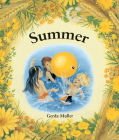
Growing Up
It really hit me yesterday that Mehalia will be nine soon – halfway to official adulthood, at least the beginning of it. She’s been wanting to do a lot more grown up things, like trying a mojito (no rum, extra sugar).
Towards the end of second grade, she decided that her style was scarves and headbands, and she had to wear them every day. Of her own initiative she took a shower the night before her first day of a new summer camp, since she wanted to make a good first impression. A few weeks ago she was really happy to help out with her great-grandma’s garage sale, insisting that she be the official money taker.
I love that she is one of the most creative individuals I’ve ever met. Since she was a toddler she’s been crafting toys from paper, boxes, string, and rocks, and recently she’s developed a signature card design (I’ll have to get a picture of one later).
She knows she wants to be a singer; a few years ago she learned a couple songs with her pop accompanying on guitar, and last year she started looking up lyrics to songs she’s heard and practicing them. I could go on and on about all the things I think are cool about her, but definitely the best part of being her mama is the inspiration she offers to express my own creativity and be the coolest person I can.
Learning to Love Messes
Disclaimer: This post is obviously not in my normal style; I wrote it a few years ago with the intention of publication in a magazine, so sorry for the weirdness but I think it has some good ideas so I wanted to include it without taking the time to rewrite it blog-style. Hope you enjoy it! : )
“I want to crack the eggs! I love getting gushy!”
This proclamation was no news to me. Since my mess-loving daughter was born, I’ve been compelled to make some compromises to my tidy sensibilities. It seemed every time I tried to quell her desire, she found an even less appealing form of expressing it. So in an effort to avoid the big messes, I forced myself to love the small ones.
Her yogurt moisturizer smeared expertly across every surface of her face and arms, her lovely sour cream designs finger-painted onto the dining table, bowls of chunky applesauce dumped with glee onto her precious head of curls. Thank goodness for the calming lavender bubble bath I discovered in her infancy – it even comes with its own bubble wand to aid in taking nice deep breaths as you scrub the sticky stuff.
We’ve made sure to screen all of her art supplies for washability so she can regularly redecorate her table and toys (family heirlooms are a no-no, a boundary she accepts in light of her otherwise nearly limitless freedom). Early on I attempted to thwart her efforts at fashion design, wanting to get the best resale value on her wardrobe, but I found that her younger friends were happy to be given her custom-made pieces, and it was hard to put a price on the sheer bliss she experienced in making her mark on the world.
My biggest fear of all, for a long time, was paint. I even enrolled my supposed-to-be homeschooled daughter in a co-op preschool so I didn’t have to let her paint at our house. I didn’t conciously realize it at the time I made the choice, but after a few months of successfully avoiding it, my motivation became clear. I decided I would have to get over it and learn to love even the “big” messes. Here’s how I did it:
Step one – Start small
Although her preschool class offered art three days a week, I started by just committing to one afternoon of gushy fun at home to get my feet wet. That seemed far less intimidating than dealing with it on a daily basis.
Step two – Contain it
A friend suggested a vinyl tablecloth to use under paintings; that way I could just wipe it clean, or even fold it up if I didn’t feel like taking care of it right away.
Endless piles of glue? Two great tricks I learned from my daughter’s teacher at the preschool co-op: practice making tiny dot patterns together so your child learns to put on small amounts of glue instead of squeezing entire tubes out at one sitting, or put a tiny bit in a dish and give her a paintbrush to spread it on. My other favorite tip from the preschool teacher: if your child is having trouble with wiping clean after using the bathroom, help her work on small motor skills. The same gripping and wiping motion necessary for effective toilet hygiene can be practiced by polishing mirrors, scrubbing tables, even using crayons and paintbrushes.
Step three – Expand your definition of mess
Water, I’ve found, is one of the ultimate thrills for preschoolers, and makes for a relatively simple recovery process. Following the wisdom of the first two steps, we started with summer water play – the obvious stuff like splashing in wading pools and pouring from one container to another. Soon I stopped discouraging the bathroom sink adventures my daughter is terribly fond of. From the moment she discovered the stopper, she’s been filling the basin, washing the soap, her toys, the sink itself (she’s very proud now of how sparkly she makes it). And much to my delight she hasn’t once overflowed it or washed something that would have been a pain to dry. In another kind twist of fate, she enjoys towling up her spills nearly as much as she loves making them. A warm tub of sudsy dishes is another of her favorite “clean” messes.
As she’s gotten older, my daughter has become far less intrigued by the gushy stuff. She’s more likely to be playing pretend, reading, or coloring with crayons at her easel (a necessary purchase, we decided, when she took an interest in coloring on walls – it was really just the vertical surface she was craving). How tragic that just as she gained the motor skills to control the mud and muck, she lost the drive for tactile exploration. Fortunately, next time she goes through a “getting her hands dirty” cycle, I’ll be prepared to accomodate her.
What We’re Reading Now – June
What Anne’s reading

The chapter I’m currently reading describes how even big businesses now are realizing that employees are more productive when allowed to do their thing whenever and wherever they please, and are compensating based on productivity rather than hours put in at the office. I’m thrilled at how at least some aspects of the global commerce climate are currently conspiring to lead us all to a creative lifestyle.
What Mehalia’s reading

I’m getting the feeling there’s going to be some kind of philosophical or political adult message, like Dr. Suess’s Better Butter Battle, The Lorax, or The Sneeches, but at this point I have no idea what the message could turn out to be. There’s just a boy who’s big enough (or his planet is small enough) for him to walk all the way around the world in a few steps, which I’m sure is going to turn out to have a symbolic meaning.
We’re only a few chapters in, so I’ll be curious to discover how it progresses.
What Zach’s reading

What Edie’s reading
